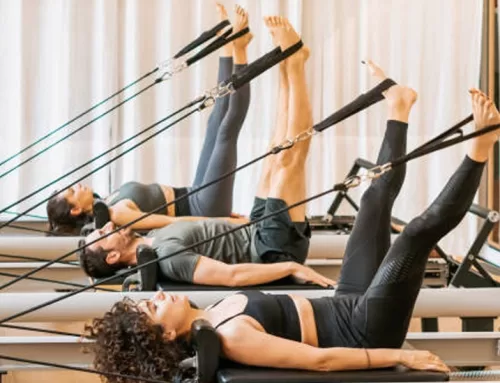According to Mr. Yash Birla, Yoga – a form of relaxing art is considered to be an injury-free exercise. This is because it increases flexibility and balance while enduring your mind with peace. But, like any other exercise Yoga have some low impact injury and hence can’t be considered as an injury-free technique.
For an instance, yoga offers a peaceful way to warm up other activities which can reduce the risk of injuries. It’s helpful to be aware that improper form can result in problems. Hence, to rectify such issues following are the ways or tips on how to prevent them:
- Hamstring Attachment strain
Students who are actually learning yoga are highly prone to hamstring attachment issues or
injuries
as compared to other variants of yoga.
Situated at the highest point of the hamstring, where the ligament joins to the sit bone, this small territory somewhere inside the lower part of the excesses can tear due to overstretching. Along these lines, presents like forwarding folds can cause a strain whenever done too forcefully. At the point when that occurs, the tears can cause scar tissue to develop, and that can make the ligament significantly tighter.
To limit the odds of this occurrence, twist the knees and deliberately connect with or fix the hamstrings. Frequently, hamstring connection issues start on the grounds that the hamstring discharges and is slack as we pivot forward. That can cause a sharp pull on the connection’s ligament, bringing about a tear.
- Wrist Pain
With regards to clinical visits that start with yoga, wrist pain might be the top protest. This will in general happen most with quick yoga rehearses where understudies are hopping once more into board posture and afterward bouncing forward.
In certain styles of yoga, typical guidance while inboard is to shift forward, so the lower arms go past the wrists. After some time, moves like these could strain the wrists.
To decrease your danger, convey your weight all through your body, instead of pushing forward in less-concentrated postures like descending canine or board — this keeps a greater amount of the pressure off your mind and wrists. Additionally, do critical warm-up presents prior to endeavoring handstand, so your arrangement is better.
- Neck Tightness
Especially intense are presented like camel where understudies let their heads fall back, in a motion that appears as though it’s delivering the neck muscles however may really be squeezing them.
If you’re inclined to message neck, establish a superior climate for your neck in yoga class by expanding your shoulder strength, which can help uphold your neck better.
Additionally, try not to totally let your head and neck discharge so the full weight of your head is tipped in reverse. This can strain the front of your neck yet in addition motivation pressure in the rear of the neck4
- Rotator Cuff Injuries
The rotator sleeve is involved four muscles that balance out the shoulder. They fold over the joint from the back, front and top, associating the bundle of the joint into the shoulder attachment.
Once in a while, the muscles are underworked, making them more fragile, and that can make an overwhelming yoga practice into greater danger. Postures utilizing loads or successions that depend on shoulder strength can overburden the rotator sleeve and cause pressure and irritation.
Ensure your sleeve by reinforcing your arms step by step. For instance, in pushup varieties have a go at having your knees on the ground or bringing down by a couple of creeps prior to pushing back up. Keep your elbows in near your body instead of winging out, which can likewise strain frail rotator sleeve muscles.
- Injury Prevention Strategies
The most widely recognized slips up he sees are understudies rehearsing too forcefully — which means they make each change into a force present — and advancing into a more unpredictable posture without doing what’s needed to heat up first.
Testing yourself can feel fulfilling, yet it’s useful to comprehend the contrast between going a couple of steps outside your usual range of familiarity and leaving it totally. Tune in to your body, change as per your requirements and increment the degree of trouble continuously. That way, you’ll get the entirety of the advantages with fewer injury hazards.








That’s really nice.
“Useful post”